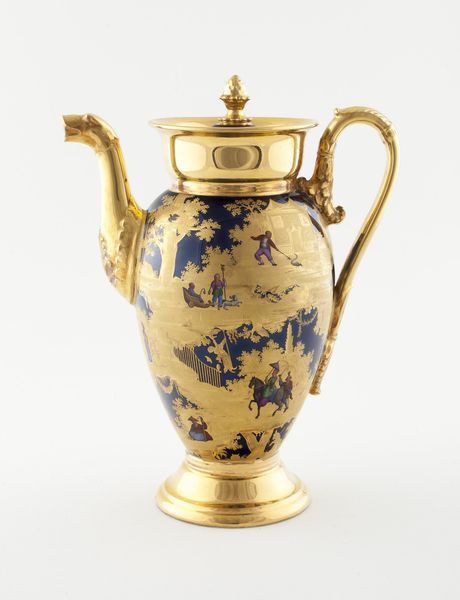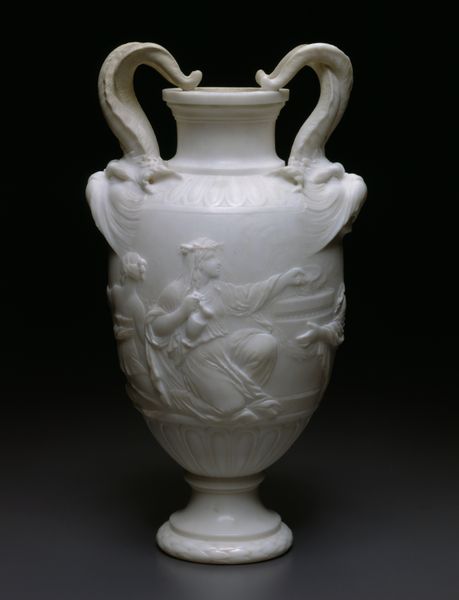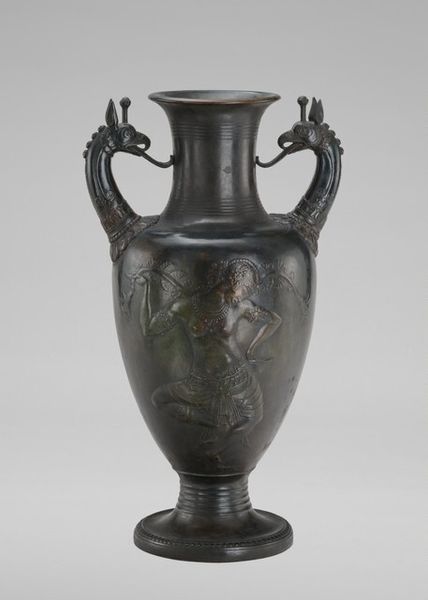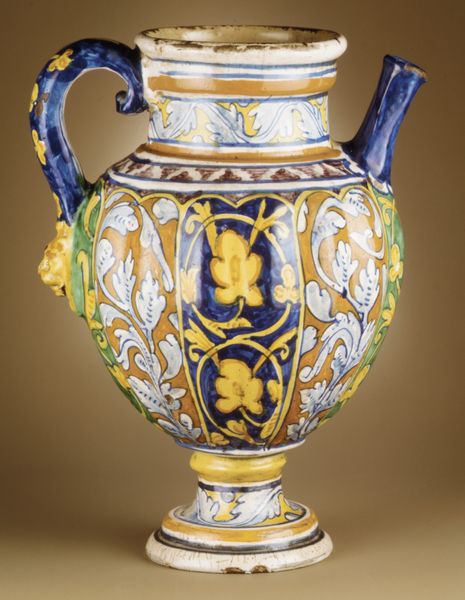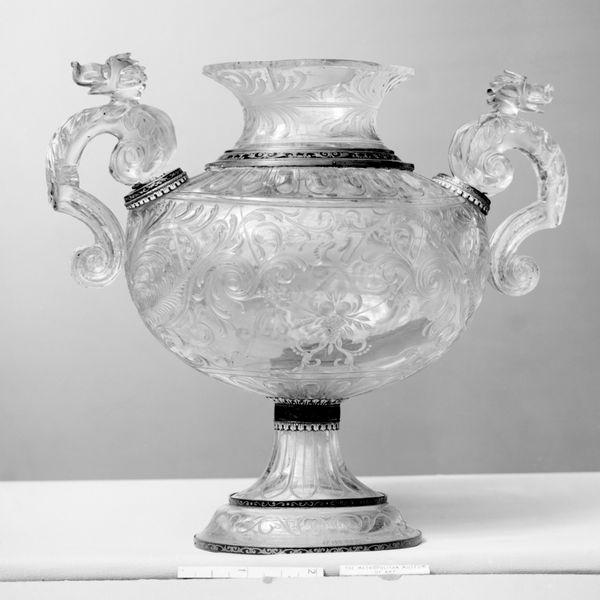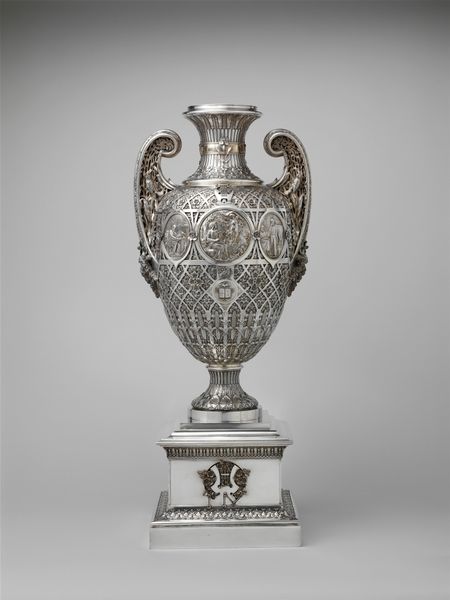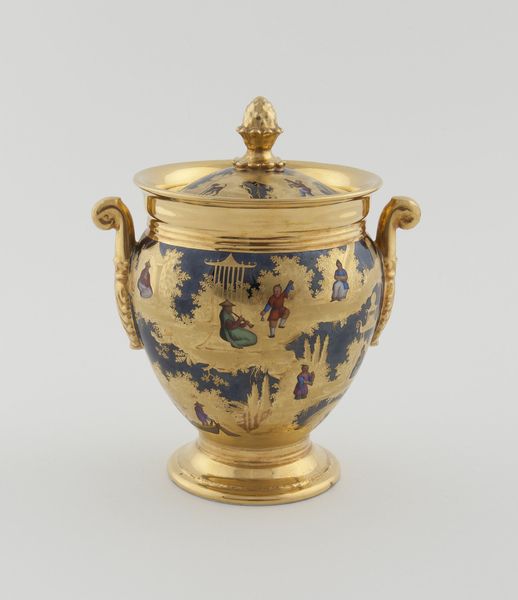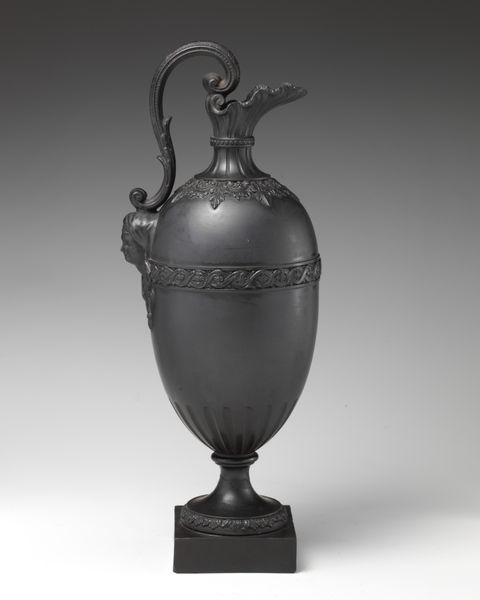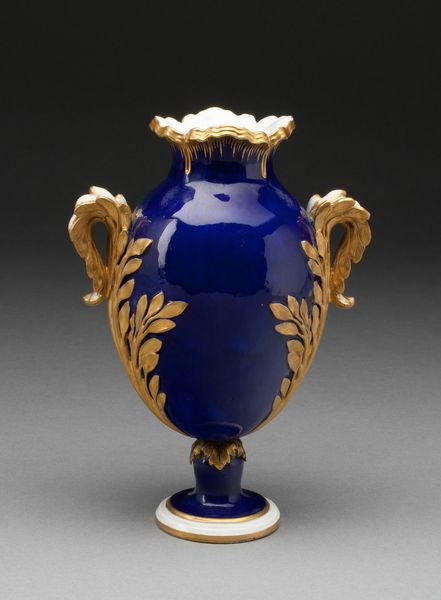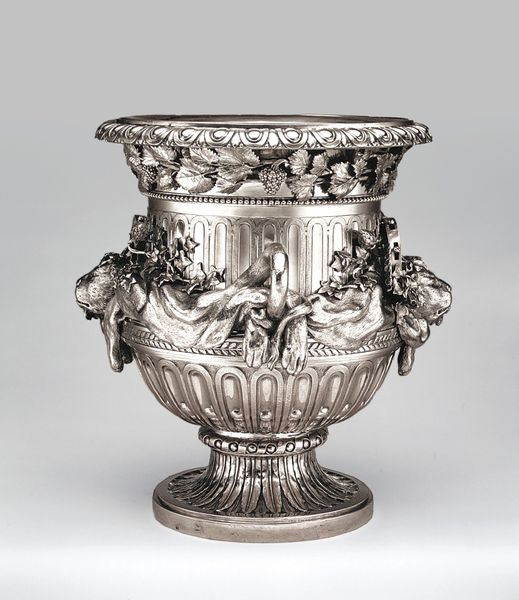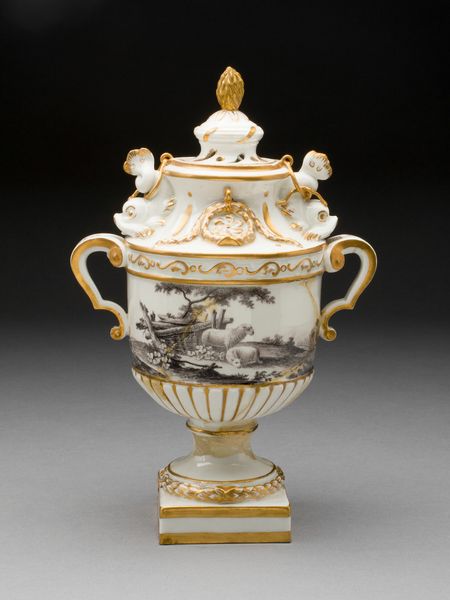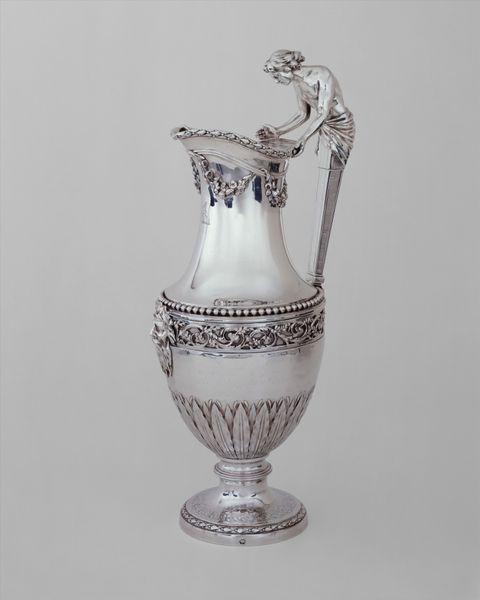
ceramic, sculpture
#
neoclacissism
#
allegory
#
ceramic
#
figuration
#
sculpture
#
history-painting
Copyright: Public domain
Editor: This beautiful blue and white object is a Jasperware vase and cover made in 1790 by Wedgwood, after a design by John Flaxman. It is ceramic, and its elegant and classical design gives me a sense of refined history. The relief figures tell a story, but I wonder, what narrative do you see unfolding here? Curator: It whispers tales of ancient grandeur, doesn't it? I'm struck by how Flaxman managed to evoke a whole world through simple color contrast. To me, the delicate figures floating against that calming blue ground remind us that even in imitation, art aspires to capture an echo of something lost. Do you see how each figure’s pose flows into the next? Like figures frozen in mid-aria. Editor: Yes, they are almost floating! They do convey movement despite being, as you say, "frozen." The figures and form exemplify Neoclassical ideals, but Wedgwood was a commercial enterprise. Did this fusion of high art and industry cheapen or popularize classical forms? Curator: That is a spicy question! Maybe both? Wedgwood brought art into the homes of the burgeoning middle class, democratizing access to these supposedly elevated forms. There's always a trade-off. Purity versus access, scarcity versus ubiquity. Look closely, though – even in mass production, Flaxman’s design retains a soulful elegance. That soaring Pegasus on the lid - doesn’t he inspire us still? Editor: He does. Now that I'm considering how it might have appeared in a home, and how influential the vase and its figures might have been...I appreciate it on a different level. Curator: Absolutely! It's all about context. What stories it could tell and who listened… fascinating.
Comments
No comments
Be the first to comment and join the conversation on the ultimate creative platform.

